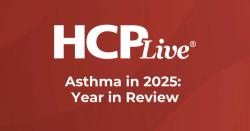
OR WAIT null SECS
Dysfunctional Breathing has Detrimental Effects on Asthma Control in Pediatric Patients
Clinician awareness is imperative with this comorbidity because overestimated asthma severity often results in over-treatment, according to investigators.
Dysfunctional breathing is characterized by hyperventilation and dypnea, or labored breathing. Adults with asthma commonly experience this, but a new study sought to examine this feature in children and adolescents with asthma.
Signe Vahlkvist, MD, PhD, Department of Pediatrics and Adolescent Medicine, Lillebaelt Hospital, University Hospital of Southern Denmark, and investigators, discovered dysfunctional breathing is a prevalent comorbidity in this population. The results led them to suspect dysfunctional breathing has a key role in difficult-to-treat asthma.
Clinicians who treat these patients may not immediately distinguish the presence of dysfunctional breathing and overestimate asthma severity. Investigators acknowledged the importance of awareness because overlooking this comorbidity often results in over-treatment.
A Closer Examination of Adolescent Asthma
A total of 363 patients from the Pediatric and Adolescent Outpatient Clinic in Denmark, aged 10-17 years, were included in the results of this cross-sectional study. Aside from patient age, inclusion criteria consisted of an asthma diagnosis according to the guidelines, and inhaled corticosteroid treatment within a maximum of 3 months before trial initiation. Patients with significant cardiopulmonary, neurologic, or musculoskeletal disorders were excluded.
Spirometry data and prescribed asthma medications were obtained from medical records. Data regarding dysfunctional breathing was collected from patient-reported information via the Nijmegen Questionnaire (NQ) and the Asthma Control Questionnaire (ACQ). Their use of beta2 agonist (β2) was also reported.
Investigators planned for a year-long study period beginning February 2021, but extended it to 15 months because of cancellations due to the COVID-19 pandemic.
Distinguishing Asthma and Dysfunctional Breathing
Data confirmed dysfunctional breathing as a comorbidity frequently observed in adolescents with asthma, and more specifically adolescent girls. Investigators identified a correlation with poor asthma control and higher use of β2.
According to the study, a score of 23 or greater on the NQ predicts dysfunctional breathing; 18% (n=67) of the study population scored within this range. This finding indicated that dysfunctional breathing was common in children and adolescents. Previous investigations have reported similar but varied rates, across different age ranges among pediatric patients.
Another key finding showed high compliance compared with previous study populations. And while this population was generally well-controlled, dysfunctional breathing still had a negative impact on disease control.
"We found a compliance with the prescribed inhaled corticosteroids of more than 80%, which is considerably higher than reported in other studies reporting compliance of only 40%–70% for this age group," investigators wrote.
Of the 363 patients, genders were just about even, with 183 girls and 180 boys. When looking at the 18% with dysfunctional breathing, these patients were older and predominantly female. This group also had a higher consumption of bronchial reliever medication, though there was no difference in airflow variation.
An interesting observation made by investigators was the lower BMI-SD scores in the dysfunctional breathing group compared with the rest of the study population. According to the team, this contradicts adult studies and is not reported in the other adolescent investigations.
"Our findings thus support that patients with asthma and dysfunctional breathing do not suffer from more severe asthma than patients without dysfunctional breathing as suggested by others," they concluded. "However, we found that a high fraction of the dysfunctional breathing group was unable to fulfill an exercise challenge, which may indicate that this group had a high degree of exercise intolerance, due to other reasons than asthma."
The study "Dysfunctional breathing and its impact on asthma control in children and adolescents" was published in Pediatric Allergy and Immunology.


